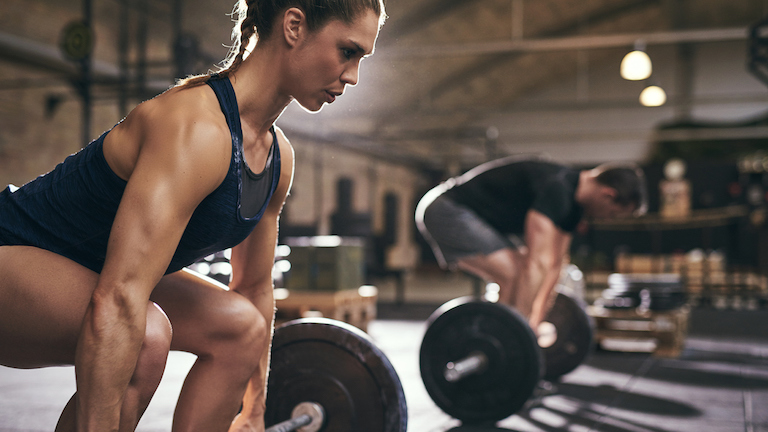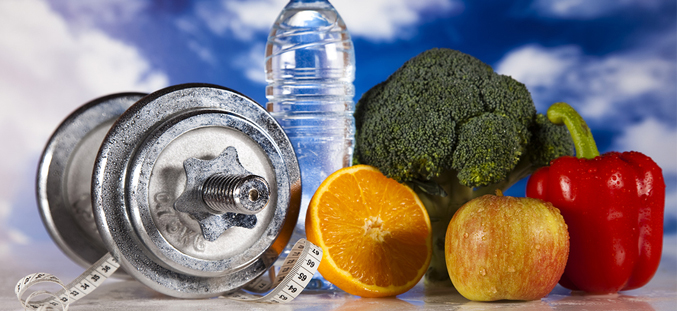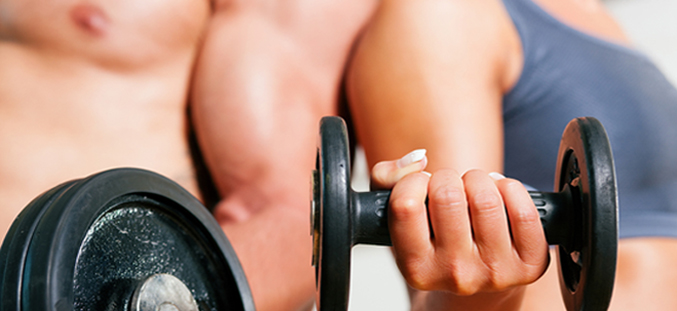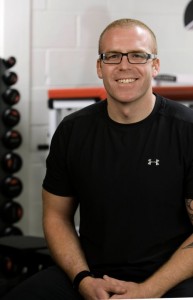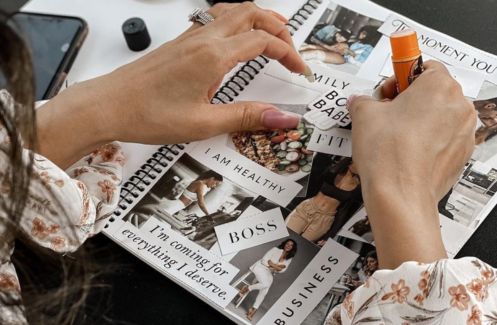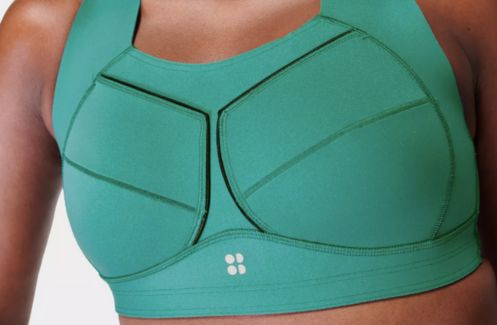Five things we need to learn from men and the grunting side of the gym for women to look – and perform – like goddesses, says Jean-Claude Vacassin, personal trainer and founder of results-based boutique gym W10 Performance
It’s probably fair to say that women would be better avoiding some of the common things that men do in the gym but here are a few ‘manly’ training tips that women should embrace:
1. Don’t be scared of strength training
Whilst this message does seem to be gradually getting through to the mainstream, as a general rule, many women still haven’t embraced strength training. Perhaps it’s the assumption that strength equates to a ‘bulky’ looking physique? It doesn’t.
Adding muscle while stripping back fat will make you look toned, shapely and lean. Not only that, a strong body is a balanced body. You’ll have better posture and less health issues, like back pain.
In my experience, it’s difficult for women to gain more that two to three kilos of muscle. They simply don’t have the natural raw materials. To build muscle you need significant testosterone and growth hormone for example, which women don’t have in abundance.
It’s worth noting also that weight training alone doesn’t build muscle, you need an excess of calories also; something that most women starting out on a gym programme are actually cutting back on.
Women who complain about looking ‘bulky’ are picking up on the layer of fat that’s covering their muscle. To get that lean look, you need to strip back on body fat, while increasing or at the very least maintaining the lean muscle tissue you do have.
TRAINING TIP Add strength training to your programme. Aim for two or three sessions per week, preferably on non-consecutive days. Watch our Strong Woman Series for expert weightlifting how-tos.
2. Eat enough calories
Most women I see are under muscled and are in a calorie deficit. Many also have a high body fat percentage, often as a result of serial dieting. The answer is not always to cut calories, especially if you’re exercising hard.
If for example your basal metabolic rate (the number of calories you need for maintenance) is 1200 calories and you cut your daily intake by 400 calories, you will lose weight in the short term. If you do this for a prolonged period however your body will adapt and try to stop you losing too much fat, especially if you’re already reasonably lean.
When you restrict calories too extremely and do not exercise your body will switch from using fat for fuel to using lean tissue for energy. This is one reason why many women on an overly strict diet lose relatively little fat but lose significant amount of metabolically active muscle mass. Weight loss might be significant, but fat loss is minimal.
The more times you go through this cycle the more muscle mass you lose over time and the harder it becomes to lose fat. Maintaining lean mass whilst losing fat is the key to long-term success. The challenge is to combine resistance training with enough calories so that you can add or maintain lean mass whilst losing body fat.
TRAINING TIP Include protein with every meal initially. A palm-sized portion is enough for most women. Stop yo-yo dieting and eat enough calories to cover your basal metabolic rate. At W10 we use the InBody machine to calculate this, but there are lots of online calculators you can use that do this more crudely.
Try: Healthista Lean Energy Protein range, formulated without sugar and with added fat-burning ingredients carnitine, glutamine, matcha green tea and konjac root.
3. Train like you mean it
It takes a surprisingly small amount of time to get fitter and stronger if you approach your training sessions seriously. You don’t need to walk into the gym slapping yourself across the face chanting war cries, but a little focus and intensity will go a long way.
You need to train like you mean it. If you are starting from scratch, almost any strength programme will work for around three months. But after an initial ‘honeymoon period’ you really need to be focused in order to see further benefits and increased gains in strength and muscle mass.
In typical gym culture, there’s an assumption that men should lift heavy and women are just fine messing around with two kilo dumbbells. But the truth is that most men lift too heavy and women don’t lift heavy enough. If you’re going to see any gains you need to ‘man-up’ and by that I mean challenge the body.
Don’t fear the ‘bulk’. Lifting a relatively heavy weight for three to five repetitions, for example, will make you stronger but won’t build muscle. You only add muscle by doing lots of sets and repetitions. You should challenge yourself and lift heavy, just don’t do too many repetitions.
The key is to challenge yourself. Picking up a weight that you can do fifteen reps of easily, and only doing ten, won’t stimulate the muscles, and will not help you change shape. You either need to up the weight, or up the repetitions. You should be working hard to finish the last couple of reps, only then are you stimulating the muscle fibres and asking the body to change.
So while all those body fitness classes with bands and light weights might be fun and burn a few calories, they alone probably aren’t going to add muscle or significantly change your shape.
TRAINING TIP Make sure the last couple of reps of each set are challenging. Look to either increase the weight you are lifting or increasing the number of reps from session to session to challenge your muscles as you get stronger.
4. Do the big stuff
When it comes to training (as with anything) it makes sense to do the things that are going to give us the biggest bang for our buck, which means we need to do the big stuff, what I call the ‘Big Four’. We need to pick big compound exercises that recruit all of our available muscles and will make us functionally and systemically stronger. A compound exercise is one that uses more than one set of joints at the same time. Think squats, deadlifts, pressing variations, chin up, lunges and so on, treating biceps, triceps and calf exercises as a luxurious add on.
The secret to any training programme is to provide the body with the minimum effective dose, or just enough to get the desired outcome. It’s not about pushing harder and doing more all of the time in a random fashion, it’s about doing a few basic things well and doing them progressively. The big advantage to choosing compound exercises is that you will need to spend far less time in the gym. They burn more calories in less time.
A good starting point would be to pick an exercise that is knee dominant, one that is hip dominant, a push and a pull. Choose a squat variation, a deadlift variation, a press-up (If you can’t do a full press-up start on your knees and finish the press higher, as you get stronger gradually work your way down to the floor) and a chin up (use bands and progress that way if you cannot do bodyweight). Make these the cornerstone of your programme.
Keep the repetitions low at the beginning – say three to five sets of five reps – and just get progressively stronger and more technically proficient at these movements. Complement these with some assistance exercises – say a single leg exercise, some rowing/pulling and some additional core work such as crunches – where the repetitions might be higher, and do your cardio training (two sessions per week is enough for most people – keep it challenging and vary it up) and you have a pretty solid platform from which you’ll get stronger, leaner and will perform better. Don’t forget to include a decent warm up, do some soft tissue work (massage, foam roller etc) and stretch where necessary.
TRAINING TIP Build your training programme around the core strength exercises and vary things with your cardio and assistance exercises
5. Be consistent
When it comes to training, men tend to be more selfish than women. They prioritise their training time, whereas when women are under pressure, often the first thing they drop is the gym. They have a harder time prioritising their own wellbeing. But if you dip in and out of a strength programme it won’t work. You might maintain what you have and see some minimal gains, but your body won’t change shape significantly.
Another issue for women is boredom. They tend to be looking for the next new, fun thing and have a greater tendency to ‘programme hop’. Men are more simple and tend to stick with the programme (sometimes for too long). I get it, being in the gym can be boring, but there needs to be a balance, you need make sure you do the ‘Big Four’, keep in the squats, deadlifts, a press exercises and a chin-up or rowing exercise and you’ll get good results. Then you can play around with the rest of the programme, to make it more varied and work on any specific areas that you need to target.
TRAINING TIP Decide on a training programme, stick with it and progress it over time. Consistent training yields results
Jean-Claude Vacassin is personal trainer and founder of results-based boutique gym W10 Performance.
More in Healthista’s Strong Women series:
Instagram star Tally Rye: ‘How I found my happy weight’
How protein powder can help you lose weight
Weightlifting tutorial: How to do a deadlift
12 best training studios in London
30 minute weightlifting workout for lower body
Like this article? Sign up to our newsletter to get more articles like this delivered straight to your inbox.



